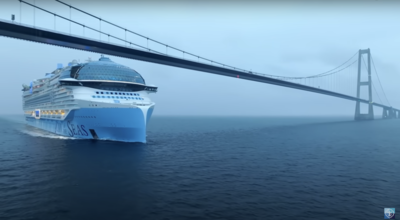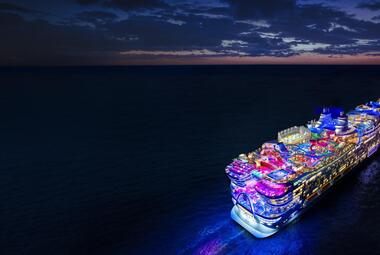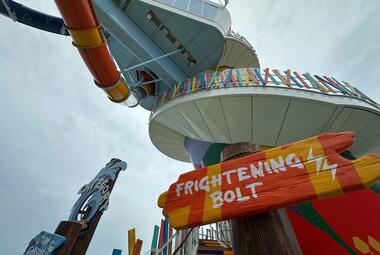With some cruises towering almost 240 feet above the water line, the engineering marvels have some tricks up their sleeves to maneuver through tight spaces, such as underneath bridges.
Last year, Icon of the Seas, the world's largest cruise ship had to navigate under Denmark's Great Belt Bridge en route from Finland to Spain.
While successful, the operation took a lot of planning and coordination between the crew, ranging from those working in meteorology to operations.
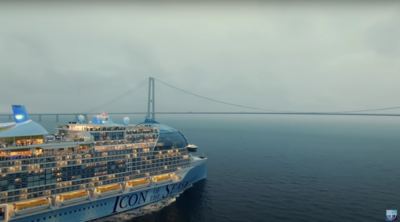
To squeeze underneath the 11-mile bridge, the 20-deck high mega-ship had its funnels retracted. Even then, it passed with just a few meters of clearance.
Allure of the Seas passed underneath the same bridge in 2010 with less than 20 inches of clearance. The second Oasis Class ship was sailing to Fort Lauderdale for her maiden season.
CruiseGuy shared a video to YouTube detailing the event. In the video, Captain Hernan Zini shared that the normal height of a cruise ship is about 73 meters; however, to safely clear the bridge, the entire height of the ship (AKA the draft) can be no higher than 65 meters, or 213 feet.

Prior to Allure of the Seas, Oasis of the Seas cleared the Great Belt Bridge in 2009
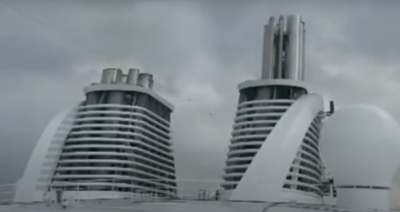
Oasis of the Seas was the first cruise ship built with retractable funnels, or smokestacks.
Captain William Wright narrated a video shared by Royal Caribbean, capturing Oasis' clearing. He begins by explaining how Oasis of the Seas' draft was 72 meters. "The clearance of the Great Belt Bridge is 65 meters," he says, highlighting the importance of the retractable funnels in order to safely clear the bridge.
The ship maintained a speed of 20 knots while sailing under the bridge, which equates to roughly 23 miles per hour.
Earlier this year, Symphony of the Seas' captain spoke about the logistics of sailing underneath the Verrazzano Narrows Bridge in New York
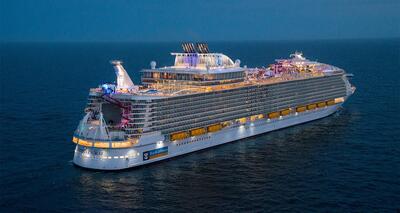
Symphony of the Seas, an Oasis Class ship measuring 238 feet tall and 1,188 feet long, is currently sailing from Cape Liberty, New Jersey to The Bahamas. Though the ship will move to Miami in November, she'll return in April 2025.
To access the Lower Bay (and subsequently the Atlantic Ocean), cruise ships departing from the New York area must pass underneath the Verrazzano Narrows Bridge, which connects Staten Island to Brooklyn.
The Verrazzano Bridge is 228 feet above mean high water and its midpoint, which is just ten feet shy of Symphony's height of 238 feet.
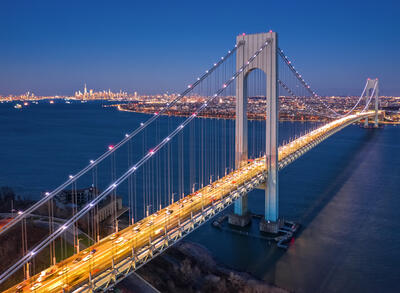
As Symphony of the Seas is one of the largest cruise ships in the world, many assumed she wouldn't be able to sail from New York because of its size.
However, Captain Rob Hempstead said the ship can safely clear the bridge because of the retractable funnels, which are present on all Oasis Class ships.
He went on to confirm that scrubbers, which help filter the sulfur dioxide from the engine's exhaust, don't take away from the funnels' ability to retract.
Read more: Royal Caribbean ships by size

The ship's speed also helps ensure larger ships can pass underneath bridges because when they're sailing at faster speeds, cruise ships actually sit lower in the water.
Mikael Palmroos, a Chief Officer for Royal Caribbean International, talks about the suction effect created when a ship increases its speed in the video capturing Allure of the Seas' clearance of the Great Belt Bridge.
"When you increase the speed in relatively confined waters," he explains, "the ship has a suction effect from the bottom and that actually makes the ship deeper into the water, so [it] increases the draft."
Read more: Pros and Cons of a Royal Caribbean Cruise


